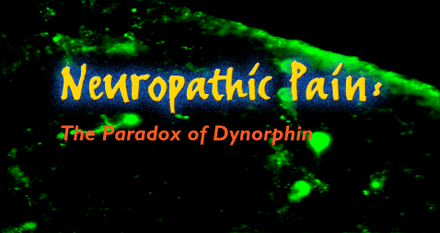Neuropathic Pain: The Paradox of Dynorphin
- Departments of Pharmacology and Anesthesiology University of Arizona Health Sciences Center Tucson, Az 85724
- Address correspondence to FP. E-mail frankp{at}u.arizona.edu; fax 520-626-4182.
Abstract
One of the curious but common consequences of opioid administration in the clinical setting is the induction, at sites uninvolved in the original presentation of discomfort, of pain itself. The induction of pain is also a reliable, measurable phenomenon in animals receiving continuous delivery of opioid. Such pain induction is associated with the expression of spinal dynorphin, a finding that is especially intriguing in light of dynorphin's ability to recapitulate many of the characteristics of chronic, neuropathic pain when administered intrathecally (i.e., into the spine). The effective treatment of chronic pain syndromes—and of tolerance to antinociceptive therapies—may thus rest on an understanding of the biological roles of dynorphin in neurotransmission.

The dorsal horn cells seen above have been immunolabeled (green) with antiserum raised against prodynorphin, the precursor
peptide of the endogenous opioid. Unlike the other two recognized classes of endogenous opioids—the enkephalins and the endorphins—dynorphin
and its derivatives fail to function as effective analgesics upon spinal injection. Indeed, it appears that dynorphin has
important non-opioid functions that maintain neuropathic pain and that may thus represent viable targets of antinociceptive
therapy.
- © American Society for Pharmacology and Experimental Theraputics 2001



